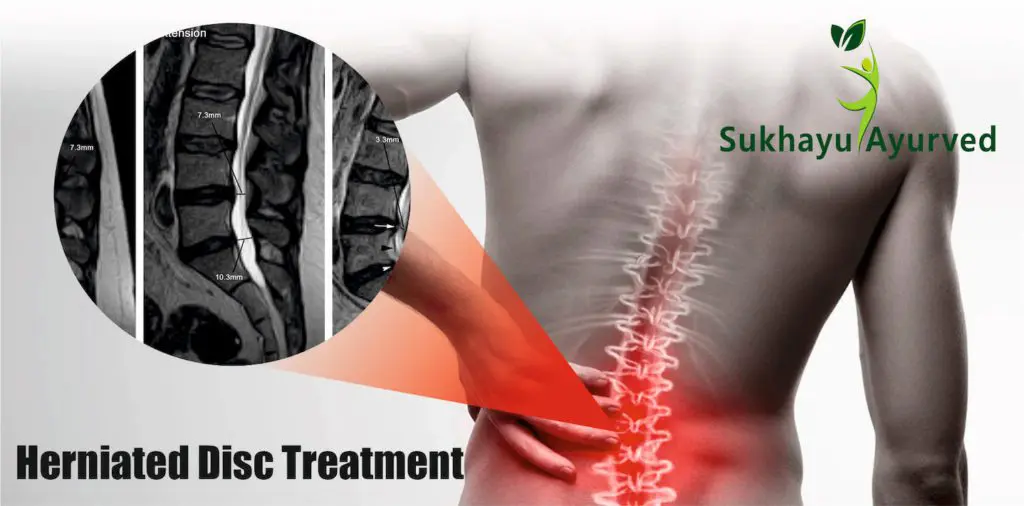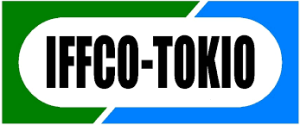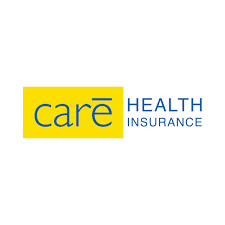Lumbar disc herniation is a very common, but sometimes still overlooked pain syndrome. The most common symptoms are those of nerve root compression: back and leg pain radiating from the buttock, down the leg. It’s associated with some sensory abnormalities as well as muscle weakness or loss of function depending on which nerves affect. Here we will discuss- Nonsurgical Ayurvedic treatment for Herniated Lumbar Disc.
15000 patients in the last 15 years- shows the legacy of Sukhayu Ayurved in treating the problems with spinal issues. We believe in proper cure of the condition, that is why for slipped disc condition, patients travel from all around the world to Jaipur.

Herniated Disc in Lumbar Spine
The mechanism for this is pretty simple. In the lumbar spine, there is a group of small cartilaginous doughnuts- intervertebral discs. These rims sit between each vertebra to cushion it and provide mobility for it to move up and down when you bend your back forward or backward or side-to-side.
These things have an outside wall, a soft gel-like center (called the nucleus), and then another wall (called the annulus).
The problem is that the outer wall is tough and strong, but in some people, it’s not. It can stretch or tear or fracture where it attaches to nearby vertebrae and if this progresses far enough, part of the gel inside the disc can escape through this tiny hole and get stuck between nearby nerves.
This condition is called a herniated lumbar disc.
The overwhelming majority (~95%) of cases occur at L4/L5 for no apparent reason: no heavy lifting, no injuries, etc., just one day you start to feel pain there and slowly over time it gets worse.
Think about these things for a minute: You don’t suddenly get an injury here; it gradually gets worse over time. The pain is typically in the back and down one leg. There are often some sensory abnormalities present as well, such as numbness, tingling, or burning. And finally, there is often muscle weakness or loss of function depending on which nerves are affected. But the main concept of the discussion is Nonsurgical Ayurvedic treatment of Lumbar disc herniation.
Here we will discuss the lumbar spine, major discs, and cause of the problem- Ayurvedic treatment for Herniated Lumbar Disc
Why Lumbar Spine is Prone to Disc Herniation?
L4/L5 is the place where your leg and back muscles attach to your spine.
So if they aren’t working correctly, it’s going to put a lot of stress on those discs.
Which Lumbar Discs Herniated Commonly?
Now let’s discuss- which segment is herniated: L4/L5 or L5/S1:
When we talk about lumbar disc herniation, almost all cases occur at one of two segments: L4/L5 or L5/S1. The only reason why that is interesting is that these are not random places; there must be some biomechanical reason for this. Let me explain briefly. In the lumbar spine, you have five lumbar vertebrae. The ones at the very top (L1) and the very bottom (L5) are small and have a lot of motion. They’re designed to twist and turn. The middle three (L2, L3, and 4) are bigger and stronger and don’t move as much.
The Disc Herniation at L5-S1
S1 is similar to L5 in that it’s a small, strong vertebra that doesn’t move much. However, L4 is different in that it is relatively small and weak with a lot of motion. This is why 95% of disc herniations occur at either L4/L5 or L5/S1. It’s not because one place is better or worse than the other. But because the loading pattern on these two places is different.
L4-L5 disc herniation
L4/L5 is an area that is loaded in both flexions (bending forward) and extension (bending backward). As you bend over, this disc takes on more of your body weight, then when you straighten up, it comes under a compressive load again. L5/S1 is a purely compressive load in all positions. It almost never sees a bending or a twisting component to its biomechanical loading. So if there’s going to be a problem here with discs herniating. It’s going to happen at L4/L5 much more often than at L5/S1 because the mechanism for injury has less “competition.”
How does Loss of Lordosis Cause Disc Bulge in Lubar Spine?
Loss of lordosis (sagittal imbalance) is a common condition in the lumbar spine. And it happens due to a variety of things: poor posture, obesity, pregnancy, etc. When you lose lordosis. It means that the natural curve in your low back is gone. And this leaves the segment at L4/L5 (and sometimes L5/S1) exposed to more compressive forces.
Now you may be wondering, “If the lordosis is so bad, why do we even have it?” The answer is that lordosis is actually a very good thing. It’s what helps us to stand upright and without it, we would be constantly falling over. The problem is that when we lose lordosis, the loading on L4/L5 and L5/S1 changes, and this can lead to disc bulges and even herniations.
The good news is that most people who have a loss of lordosis can improve their posture with some simple exercises. This will help to take the stress off of those discs. This becomes easier with Ayurvedic treatment of Lumbar disc herniation at Sukhayu Ayurved. We follow a three-dimensional approach- Ayurvedic medicines, Panchakarma, and Yoga Asanas to heal the discs, completely.
Ayurvedic treatment for Herniated Lumbar Disc aims at bringing back the normal curvature of the spine.
Symptoms of Herniated Lumbar Disc
All of these symptoms are pretty classic for a herniated lumbar disc, but keep in mind that it’s not just one symptom or even two. It’s a combination of them all that together make up the syndrome. So, if you have any of these, see your doctor and get it checked out:
- Back pain – this is usually the most predominant symptom and it can be anything from a dull ache to a sharp stabbing pain
- Leg pain – this is usually worse than the back pain and can radiate down the leg all the way to the foot
- Sensory abnormalities – such as numbness, tingling, burning, or electric shock-like sensations
- Muscle weakness or loss of function – depending on which nerves are under compression. When compression is on L5-S1, you might have problems with the muscles in the foot.
I want to quickly point out that these symptoms are typical but not definite. So if they are there or not is completely dependent on the exact situation. Just because you have any of them doesn’t mean it’s a herniated disc, just keep that in mind when you read about this elsewhere on the Internet. Keep an open mind and look at all possibilities when evaluating your pain, don’t just assume it’s a herniated disc right away.
Sciatica vs Herniated Disc
A lot of people will say “sciatica” and what they really mean is a herniated disc, and vice versa. So, what’s the difference?
Well, sciatica is a general term that refers to pain, numbness, tingling, or weakness that radiates down the leg from the back. It can happen due to a prolapsed disc lumbar disc. But it can also be caused by other things such as spinal stenosis, Piriformis syndrome, etc.
A herniated disc, on the other hand, is a specific condition that refers to when part of the nucleus from inside the intervertebral disc escapes through a tear or hole in the annulus and gets stuck between nearby nerves. So, while sciatica is a general term that includes many different conditions, the herniated disc is a specific term that only includes the situation I just mentioned.
Herniated Disc vs Slipped Disc
Another common misconception is thinking a herniated disc and a slipped disc are the same thing. They aren’t at all, slipped discs occur between vertebrae and don’t affect any nerves – if anything, they provide cushioning for them! The fact that we call it a “slipped disc” (and not an “intervertebral disarrangement”) should be enough to prove its point.
Herniated discs, on the other hand, occur where the intervertebral disc attaches to nearby vertebrae and affects nearby nerves.
I’m not saying they never happen simultaneously. For example, a slipped disc can cause compression of nearby nerves. But usually, when you hear about people having both herniated discs and slipped discs at the same time. It’s “sciatica.”
How Do You Get a Herniated Disc?
Now that we’ve cleared some of that up, let’s move on to how you actually get a herniated disc.
Most herniated discs occur as a result of age-related wear and tear on the spine. As we get older, our discs start to thin and lose their elasticity which can lead to bulging or even rupturing.
Other causes can include:
- Trauma – such as a car accident, fall, or sports injury
- Heavy lifting – especially if done incorrectly
- Obesity – extra weight puts more stress on the spine
- Pregnancy – the added weight and hormone changes can cause the discs to expand and bulge
- Smoking – nicotine reduces the blood supply to the discs which can make them thin and weak
- Genetics – some people are just more prone to developing herniated discs than others
Treatment for Herniated Disc
So, what can you do if you think you have a herniated disc?
Well, the first step is to see your doctor. He or she will ask about your symptoms and do a physical exam. They might also order an MRI or CT scan to get a better look at what’s going on.
Once they have a diagnosis, they can start treatment. This might include:
- Physical therapy – this can help improve flexibility, strength, and posture
- Pain relief medications – such as NSAIDs, acetaminophen, or opioids
- Surgery – this is usually a last resort,
Most people with a herniated disc can recover with nonsurgical treatment. It might take some time and patience, but you should start to see improvement over time. Just be sure to follow your doctor’s instructions closely so you can get back to your life as soon as possible!
There are many different causes of sciatica, herniated discs being one of them. However, not all cases of sciatica are because of herniated discs. And it’s important to keep an open mind when evaluating your pain. Other causes of sciatica include spinal stenosis, Piriformis syndrome, etc.
Understanding complications of Herniated Lumbar Disc
A herniated disc, on the other hand, is a specific condition that refers to when part of the nucleus is from inside. The intervertebral disc escapes through a tear or hole in the annulus and sticks between nearby nerves. So, while sciatica is a general term that includes many different conditions, the herniated disc is a specific term that only includes the situation I just mentioned.
Herniated discs are more common as we get older. And can be caused by age-related wear and tear, trauma, heavy lifting, obesity, pregnancy, smoking, or genetics.
Most people with a herniated disc can recover with nonsurgical treatment which might include physical therapy, pain relief medications, and surgery in rare cases. Just be sure to follow your doctor’s instructions closely!
Is surgery a solution for Herniated Disc
Surgery is only a solution for herniated discs if the pain is so bad that it’s preventing you from living your life. And even then, it’s not always successful – in fact, about 50% of people who have surgery for a herniated disc will end up having to have another surgery within 10 years!
So, before you even consider surgery, make sure you’ve exhausted all other options. Try physical therapy, chiropractic care, acupuncture, and/or massage. If those don’t work, then talk to your doctor about medications or injections that might help. Only if all of those fail should you consider surgery as a last resort.
Risks of Herniated disc surgery?
As I mentioned before, surgery is not always successful. And it also comes with its own risks, such as:
- Infection
- Blood clots
- Nerve damage
- Paralysis
So, if you can avoid surgery, I would highly recommend doing so. There are many other options available that can help relieve the pain without all of the risks surgery entails.
Why does Surgery be not a solution for Herniated disc?
There are many reasons why surgery may not be the best solution for a herniated disc.
First of all, surgery is a very invasive procedure and can be quite risky. There are also no guarantees that it will fix the problem – in fact, it can sometimes make things worse.
Another downside is that recovery can be quite lengthy and painful. You will likely need to take time off from work and you may not be able to do many of the activities you enjoy.
Finally, surgery is expensive and not everyone can afford it.
All of these factors together mean that surgery should only be considered as a last resort for treating a herniated disc. Nonsurgical treatment options such as physical therapy, pain relief medications, and injections are usually the best first option.
Ayurvedic treatment for Herniated Lumbar Disc

Ayurvedic treatment for Herniated Lumbar Disc, Ayurvedic medicine can treat sciatica symptoms in a natural non-surgical way. By taking the holistic approach to wellness, Ayurveda aims to find and treat the root cause of your symptoms rather than just treating symptoms themselves.
In addition to dietary changes and mind-body therapies such as yoga and meditation, one of the key components of this healing tradition is restoring balance in your nervous system.
One way to treat this is through the use of specific herbs that can help reduce pain, improve circulation and nourish those nerves.
Which dosha Causes Lumbar Disc Herniation?
The dosha that is responsible for Lumbar Herniated Disc is Vata. The imbalance of Vata can be caused due to many reasons such as stress, wrong diet, lack of exercise, etc. Ayurveda has detailed knowledge about how to balance the Vata dosha and thus helps in curing this problem.
Vata dosha and Herniated Disc in Lumbar spine is
Vata dosha and Herniated Disc in the Lumbar spine are very much related. This is the reason why Ayurveda has a separate branch of treatment known as Vatavyadhi for this condition.
The basic principle in curing a Herniated Disc in Lumbar Spine through Ayurvedic medicine is to balance all three doshas and calm the aggravated Vata dosha which is causing pain, inflammation, and problems to the person with a herniated disc. The areas responsible for forming Vata are the lower abdomen, thighs, perineum, etc.
In addition to balancing Vata dosha, therapies such as Abhyangam, Pizhichil along with herbal medicines help to treat herniated discs in the lumbar spine. By doing this, the function of nerve and muscles are improved and the body is able to heal itself. These things together help in Ayurvedic treatment for Herniated Lumbar Disc.
If you are suffering from a herniated disc in your lumbar spine, Ayurveda may be the perfect treatment for you! Contact us today to schedule an appointment and learn more about how we can help you get relief from your symptoms.
Panchakarma for Lumbar Herniated Disc
Panchakarma is an intensive detoxification and rejuvenation treatment used in Ayurveda to treat a wide variety of health conditions. It can be especially beneficial for those with a herniated disc as it helps to remove toxins from the body, improve circulation, and reduce inflammation.
The process usually involves a series of massages, herbal baths, and enemas over the course of 8 to 16 days.
Yoga for Lumbar Herniated Disc
One of the best ways to treat a herniated disc is to get regular exercise. Yoga can be especially beneficial because it helps lengthen and stretch your lower back while strengthening your core muscles, which are essential for supporting the spine. But you should talk with your doctor before starting any new exercises, just to make sure they’re safe in your case!
Most people with a herniated disc can recover naturally without having surgery. If you don’t want to go that route, surgery might still not be right for you either. Surgery success rates are quite low, so you’ll need to exhaust all other options first before even considering it as an option.
Ayurvedic Medicines for Herniated Disc in Lumbar Spine
Ayurvedic medicines for Herniated Disc in Lumbar Spine are helpful to cure this problem. There are various Ayurvedic medicines available. The most common Ayurvedic medicines used to treat Sciatica are Rauwolfia Serpentina, Tulsi, Indian Frankincense, Guggul, Ajowan etc.
Why should you not do Yoga Asanas without an Expert in Herniated Disc?
If you are suffering from a herniated disc, it is best to avoid doing Yoga Asanas without an expert’s guidance. This is because some of the poses can aggravate the condition and worsen the pain.
Some asanas like backbends, Camel pose, and bow pose- are not good for patients with herniation of the lumbar disc. It is better to stick to gentle poses such as Child’s pose, Corpse pose, and Fish pose.
When done under the supervision of an experienced Yoga teacher, Asanas can be very beneficial in healing a herniated disc. The teacher will help you do the poses correctly and ensure that you are not putting any undue stress on your back.
If you are looking for a safe and natural way to heal a herniated disc without surgery, Ayurveda may be the perfect option for you. Contact us today to learn more about our treatment options and how we can help you get back on track!
We follow a complete process for the treatment of the condition, where we do relax the muscles- by removing toxins with Classical Panchakarma. Along with this we make sure that your local muscles will strengthen with- External Panchakarma. And the last one is to opt for Yoga Asanas.
How did Ayurvedic medicine help in Lumbar Herniated Disc
Here are few of the main points about the Ayurvedic treatment for Herniated Lumbar Disc.
1. Deep Abhyangam –
A combination of Ayurveda oils and herbal powders is massaged over the affected areas to reduce inflammation and pain. It also helps in rejuvenating the body to heal itself by strengthening tissues, muscles, and ligaments around the spine.
2. Pizhichil –
Warm oil is poured on specific parts of your body such as the lower back region which will be wrapped with hot cloth pieces to provide deep warmth for relaxation. This therapy improves blood circulation and soothes arthritis and muscle pain.
3. Nasyam –
Nasal drops are administered to improve circulation and remove toxins from the body. This helps in reducing inflammation and pain.
4. Herbal medicines –
Ayurveda herbal medicines help in restoring the balance of Vata Dosha and provide relief from pain and inflammation.
5. Diet modification –
A balanced diet according to the Doshas and individuality is essential for overall health and well-being. It is also important to avoid foods that aggravate Vata dosha such as caffeine, processed foods, etc.
If you are looking for an effective, safe, and non-invasive treatment for herniated discs in the lumbar spine, Ayurveda may be the perfect choice for you! Contact us today to schedule an appointment and learn more about how we can help you get relief from your symptoms.
Non-Surgical Ayurvedic Treatment for Herniated Lumbar Disc
In Ayurveda, a herniated disc is treatable through Panchakarma, the 5 actions of purification. The process involves detoxifying and rejuvenating the body as a whole as well as providing deep nourishment to the spine and nervous system.
Resorting to surgery too quickly is usually not necessary when it comes to a herniated disc – in fact, surgery should only be considered as a last resort!
Panchakarma is a comprehensive program that allows for gentle healing with few side effects, which makes it an ideal treatment if you are considering surgery or if your symptoms have not improved after trying other treatments.
The primary principle of panchakarma is detoxification – removing toxins from the body and restoring balance. Massages, herbal baths, oil pooling, and enemas and many other things help in achieving smooth and relaxed muscles, through detoxification.
If you are interested in learning more about this treatment or would like to schedule an appointment, please contact us today. We would be happy to discuss your individual situation and recommend the best course of treatment for you herniated lumbar disc.
Non-Surgical Treatment ofHerniated Lumbar Disc with Ayurveda
Ayurvedic treatment for Lumbar Herniated Disc is a very good option to cure this problem. This is because Ayurveda follows the principle of restoring balance in the body as a whole. In most cases, a herniated disc can be cured without surgery.
The herniated disc in the lumbar spine is treated with several therapies such as Abhyangam, Pizhichil, Nasyam, etc. Along with this, herbal medicines are also prescribed to balance Vata Dosha which is responsible for causing problems related to the nerve channels and muscles of the lower back region. This provides tremendous relief from pain and inflammation associated with sciatica.
Ayurvedic therapy not only cures the problem of sciatica but also rejuvenates your body that helps you lead a healthy life. Ayurveda has an excellent track record in treating Sciatica without any side effects. It is known to bring about a complete cure while ensuring that the patient is free of medicines after some time.
The main thing about the Ayurvedic treatment for Herniated Lumbar Disc is- we fix the problem from the root, not just the symptomatic relief.
FAQs about Herniated Lumbar Disc
Here are a few common questions, I had come across in my routine clinical practices. You might have some different questions but before that, please go through these and if you have some queries, please feel free to message us.
Q: What is a herniated lumbar disc?
A: A herniated disc occurs when the soft, gel-like center of an intervertebral disc pushes through a tear in its surrounding, outer ring of tougher fibers. This may cause pressure on nearby nerves and result in pain, numbness or weakness. A herniated disc can occur in any of the discs in your spine but is most common in your lower back, or lumbar region.
Q: What are the symptoms of a herniated lumbar disc?
A: The following are the most common symptoms of a herniated disc in your lumbar spine. However, each individual may experience symptoms differently. Symptoms may include:
– Pain that radiates into your buttocks and legs
– Tingling or numbness in one leg or foot
– Weakness in one leg or foot
– Loss of bladder control (urinary incontinence)
If you are experiencing any of these problems, contact your doctor immediately so he or she can diagnose your condition and provide you with appropriate treatment.
Q: How do herniated discs occur?
A: A herniated disc is usually caused by a traumatic injury, such as falling from a height, being in a car accident or lifting something extremely heavy. As we age, our intervertebral discs tend to dry out and become smaller. This makes the outer ring of fibers weaker so it may tear under pressure from an impact injury. Not every impact injury results in a herniated disc; however, it can happen in some cases even without traumatic injury.
Q: What precautions I should take with Herniated Lumbar Disc?
A: You should avoid certain activities such as heavy lifting, bending or twisting, which can increase your risk for a herniated disc. Depending on the severity of your condition, you may need to take precautions with other activities until your symptoms improve…
Q: What is the treatment for a herniated lumbar disc?
A: The best course of action depends on your overall health, the severity of symptoms, and other factors. If your symptoms are mild, you may be able to treat them with a combination of rest, ice, pain relief medications, and physical therapy. If your symptoms are more severe or do not improve with conservative treatment, you may need surgery to remove the herniated disc. However, in many cases, Ayurveda can provide a non-surgical solution that cures the problem without resorting to surgery.
If you are considering surgery or if your symptoms have not improved after trying other treatments, contact us today for more information about our Ayurvedic non-surgical treatments for herniated discs. We would be happy to discuss your individual situation and recommend the best course of treatment for you.














